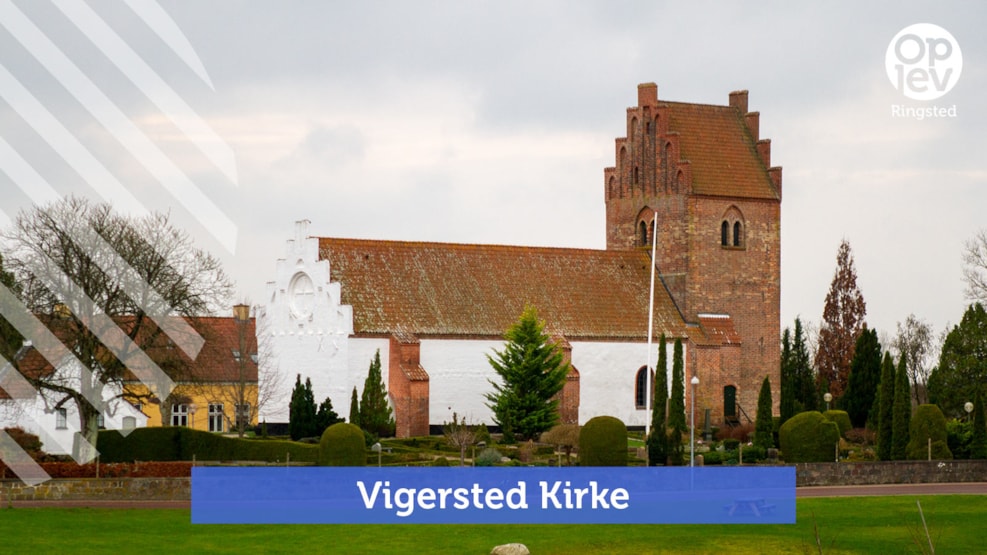
Vigersted Kirke
The oldest part of Vigersted Church dates back to around 1150 and originally consisted of a Romanesque nave with a chancel and apse. Of these original structures, only the two long walls of the nave and the west gable remain, the latter now serving as the wall between the nave and the tower room.
In the first half of the 15th century, Vigersted Church was expanded with a long chancel (with the nave and chancel of equal width), a sacristy, and a church tower. Around 1500, the porch was added. The church was originally dedicated to Saint Nicholas, the generous and joyful giver, protector of children and seafarers—better known as Santa Claus and the inspiration for Father Christmas.
Vigersted Church may be relatively large because it served as a pilgrimage church due to Saint Vilhelm’s Spring, which was believed to have special powers and a miraculous effect. In midsummer, around Midsummer’s Eve (Sankthans), pilgrims traveled to the spring and attended the associated market. Perhaps the income from these pilgrimages provided the financial foundation for the major renovations in the late Middle Ages.
The Legend of the Spring’s Origin
It is told that:
"Near Ringsted lived a resourceful man named Willum. He cast a bell for Vigersted Church, which had such a powerful sound that it could be heard all the way to Valby Hill. But he had melted so much silver into it that he became impoverished and fell into great debt. Pursued by his creditors, he fled to the fields of Vigersted, where he was killed beside a burial mound. At that very spot, a spring gushed forth, which is still called Saint Willum’s Spring."